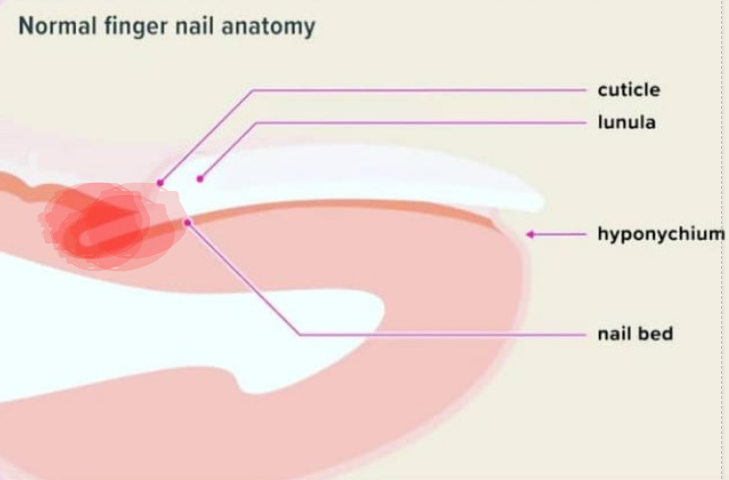Learn more about this nail condition – Retronychia
What is retronychia?
Retronychia is a nail condition where the proximal section of toenail (base of the nail) is ingrown into the proximal nail fold. Characteristic features include a yellow discoloration of the nail plate, detachment of the nail plate from the nail bed (onycholysis), inflammation of the proximal nail fold. It can often affect the toenails of dancers as well as athletes.
The toes are more commonly affected than the fingers, and the great toenails are the nail units most likely to be affected on the feet.
Causes of Retronychia
Retronychia is generally caused by some form of trauma affecting the proximal section of the toenail. The causes include:
- Acute trauma
- Repetitive trauma such as shoes that are too small.
Due to the trauma with this condition, you often get a new nail growing underneath the old nail and this pushes the old nail up into the proximal nail fold, causing redness and inflammation. The underlying nail matrix is often damaged because of the trauma. So, a new nail does not grow out. Hence, a tell tale sign of retronychia is when the nail is not growing.
Two Stages of Retronychia
Two stages of retronychia are reported:
- the early stage (stage 1) – frequently underdiagnosed and characterized by interrupted nail growth, yellowish nail plate discoloration and exudate from beneath the proximal nail fold, but with discreet paronychia; and
- the late stage (stage 2) – where all symptoms are present, particularly intense paronychia and slight elevation of the proximal nail fold.
Treatment of Retronychia
Retronychia is often misdiagnosed as an isolated infection of the proximal nail fold. Antibiotics will help settle any associated infection but it will not fix the problem as it is not addressing the cause. To successfully treat this condition, you need to remove the damaged toenail. Nail plate avulsion is the treatment of this condition.
Are you suffering from this condition? One of our podiatrist can assist and recommend what treatment options are best to get you back on track. ✅
Schedule an appointment here or you may call us at 44 (0) 207 101 4000. 📞
We hope you have a feetastic day! 👣☀️
-The Chelsea Clinic and Team




